Hey, thanks for checking out the video that goes with this article. I hope you submit an automation challenge for me to try setting up. This article will go into more detail about the automations I created in the video.
If you have any questions or see something that needs to be fixed, please let me know down in the comments.
All right, lets take a look at the first challenge.
Table of Contents
Challenge #1 – Smart Washing Machine
Affiliate Disclosure: This page has affiliate links, which earn us commission at no cost to you.
The automation idea is to get notified and possibly reminded to get clothes out of the washing machine when it’s finished.
I’ve actually needed this automation for a while now, because our washing machine doesn’t make a noise when it’s finished.
Budget Option – Wyze Sense
As you may know, Wyze Sense contact sensors are dirt cheap at about $5 per sensor. You would need the Wyze Sense starter kit, but that is pretty inexpensive as well.
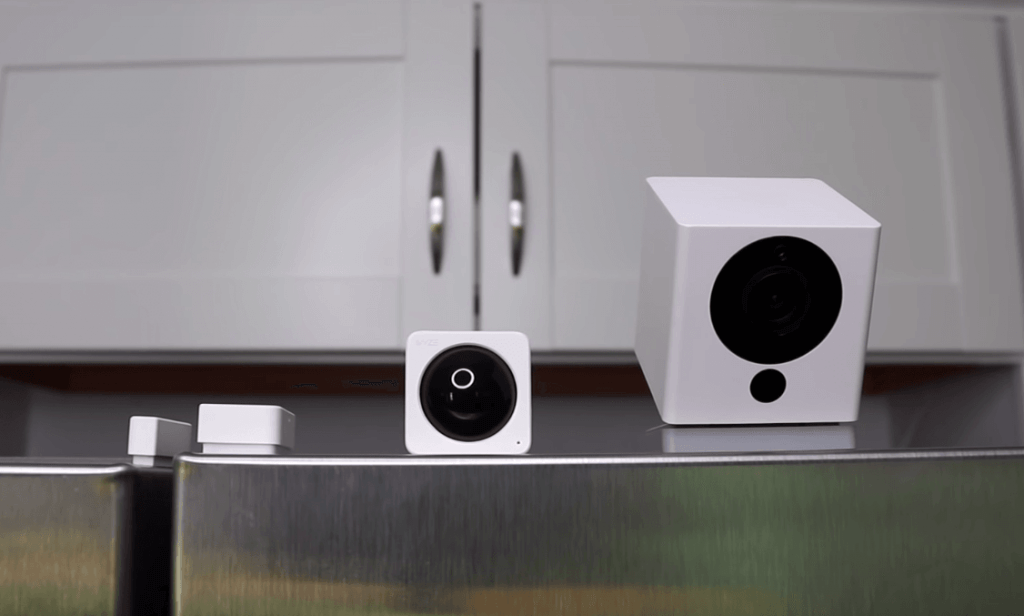
The idea is to take that Wyze contact sensor and put it on the washing machine door. Then after loading clothes into it and shutting the lid, the sensor would trigger a timer to notify my phone and announce on echo devices when the timer finished.
IFTTT/Wyze Rules
I first looked at using IFTTT. I thought I might be able to use some type of “reminder” service. I tried out iOS Reminders but it didn’t work for me. I just couldn’t find a good way of delaying the reminder or notification using IFTTT.
If you are reading this and know of something that may work, please let me know because you might know IFTTT better than me.
Wyze Rules weren’t helpful at all. The only options are to mute notifications, turn on a light or trigger camera settings. There was nothing to do with notifications that I saw. There is so much potential for Wyze to improve in this area.
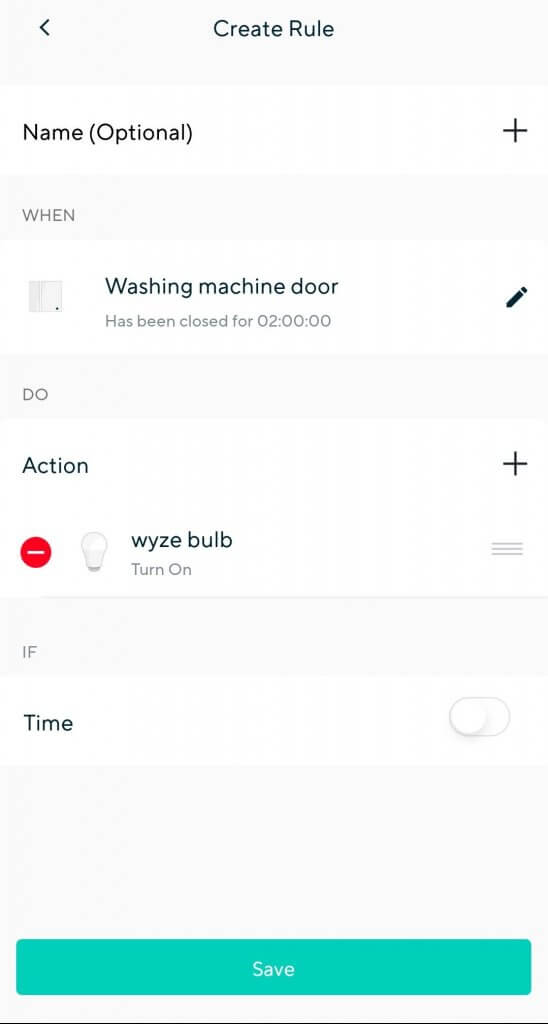
Alexa Routines
That’s where I landed on Alexa Routines. I could trigger the Alexa Routine from the Wyze contact sensor closing, assuming I’m closing the washing machine lid after I loaded clothes.
Then I can set a Wait Time for how long the washing machine usually runs. After the wait time, a notification can be sent out.
Now what about closing the washing machine lid after unloading the washer? That would also falsely trigger this. But with the Alexa Routines there is a setting to only run the routine for a certain amount of time.
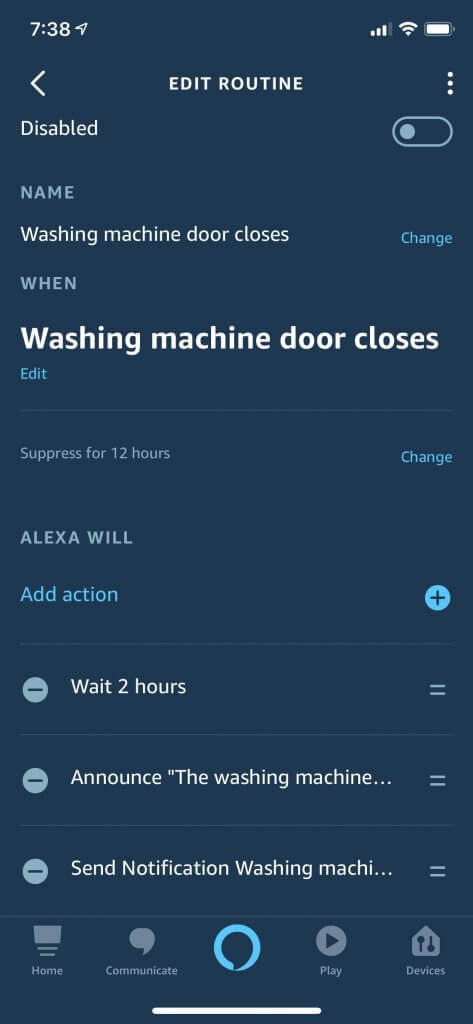
So if you only wanted the routine to run once per day you could set it to run once per 12 hours (the max amount). As you can see it says “Suppress for 12 hours” above. That way you will only get one reminder.
This obviously wouldn’t work with doing multiple loads of laundry in a day. There are plenty of other limitations that I listed out in the video. For example, there isn’t a way to cancel the timer. The time it takes for the washing machine to finish can vary as well.
But if you’re looking to make this automation happen on a budget, Wyze Sense and Alexa routines will work. However, I recommend the more expensive option for this challenge.
More Expensive Option – SmartThings
This next option is much better and isn’t necessarily much more expensive.
It requires a smart outlet that can measure power usage to be used in automations. The SmartThings outlet shown in the video is $18 and only uses WiFi, so you don’t need the SmartThings hub for the outlet to work.

So this option could be technically less expensive than buying the Wyze Sense starter kit. But since I’m using webCoRE which I believe requires the hub, it makes it more expensive.
Washing Machine Plugged into Smart Outlet
I’ve looked for WiFi smart outlets that can use the power usage in automations. SmartThings is the only one that I could find and it works really well too.

When I plugged in my washing machine to the smart outlet it stayed at 0 watts while not running. That makes it easy to know when the washing machine is running or not.
Once it started, the watts jumped all over the place and sometimes went down to 2 watts in between cycles.
To play it safe I just set the logic to wait 5 minutes on 0 watts before alerting me.
In webCoRE I created a local boolean variable that keeps track of when the washing machine is on. So when the smart outlet has over 0 watts it will set the boolean to true.
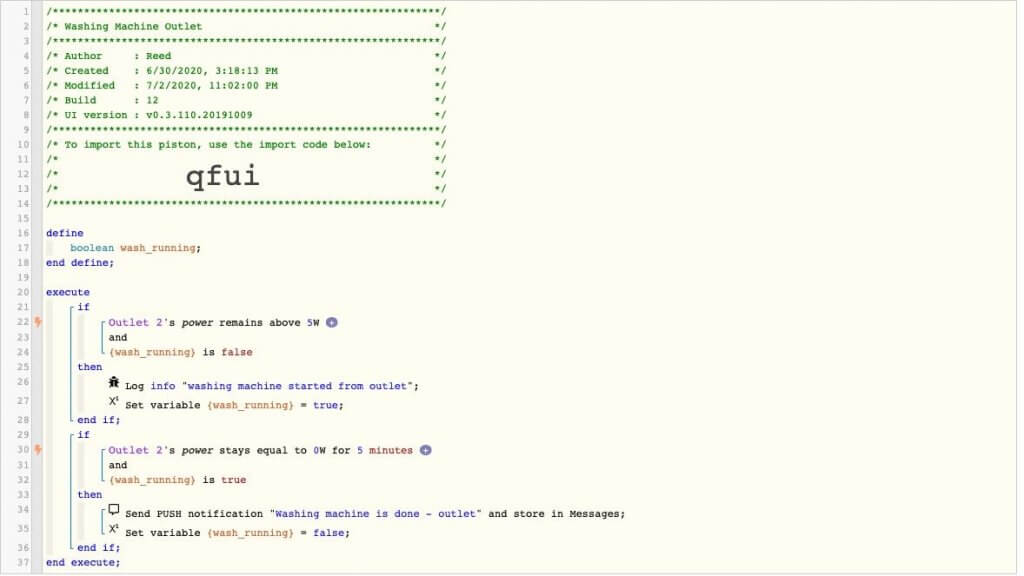
That way when it’s been 5 minutes of 0 watts and the boolean is still true. Then I can send myself a reminder and change the boolean to false. Doing it this way will make sure I don’t get duplicate reminders.
SmartThings Multipurpose Sensor
Adding a multipurpose sensor to the washer door can add a couple of extra benefits.
First, if I opened up the washing machine door after it was finished and before I got my reminder notification, I can set that boolean to false which will cancel my notification.
Second, if I dismiss the notification and I still forget to move my clothes. I can keep sending reminders periodically until I open up the door.
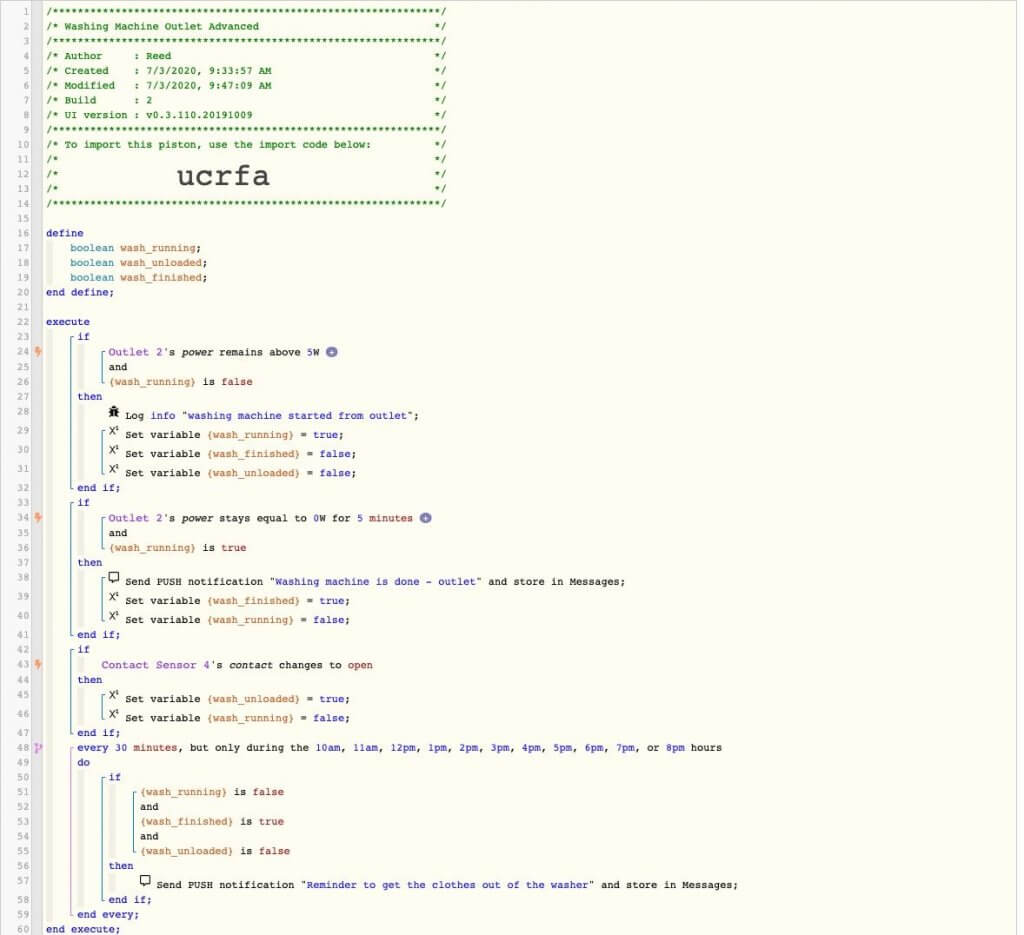
Now you can also just use the Multipurpose sensor to detect when the washing machine is on and not use the smart outlet.
Below is my piston to use the multipurpose sensor without the outlet to notify when the washer is finished.
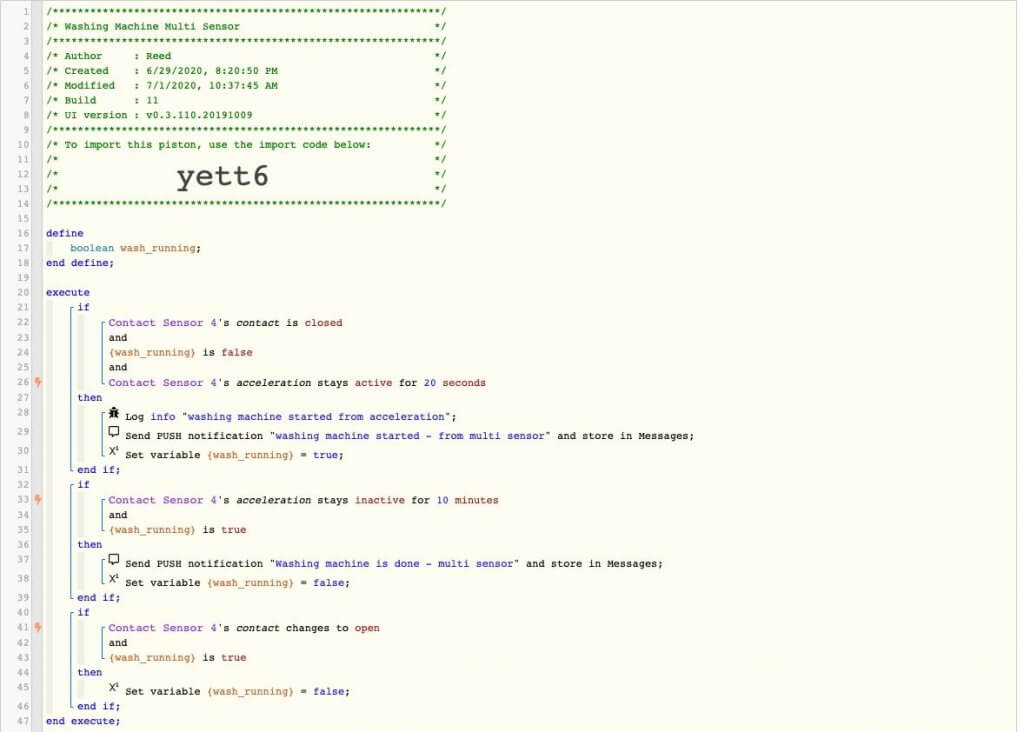
The logic works, but like I mentioned in the video the dryer vibrates the ground enough to be picked up by the sensor on the washer. This may not happen if your dryer is nicer than mine, but overall the smart outlet is going to be more accurate.
Challenge #2 – Doorbell Flashing Lights
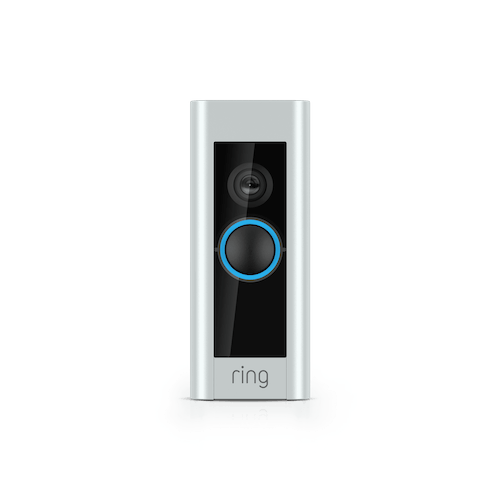
This is one of the automations in my house that I have always liked. There are plenty of times when I want to visually see someone is at my front door by flashing the smart lights.
For example, this is great if you are wearing noise cancelling headphones, doing the dishes, or if the doorbell chime is silenced during baby’s nap time. Flashing the lights is also extremely helpful for those who are deaf or hard of hearing.
Budget Option – Alexa Routines
For this option I’m using the Eufy battery doorbell and some TECKIN smart light bulbs.
TECKIN uses Smart Life which is supposed to be losing IFTTT support. It still works well with Alexa Routines though.
I created an Alexa Routine to turn the smart light on and off. The problem is that I have to put a “Wait” in between turning the bulb on and off. The minimum time is 5 seconds so it’s very slow. This could still work to alert you, but it’s not really a quick flashing light.
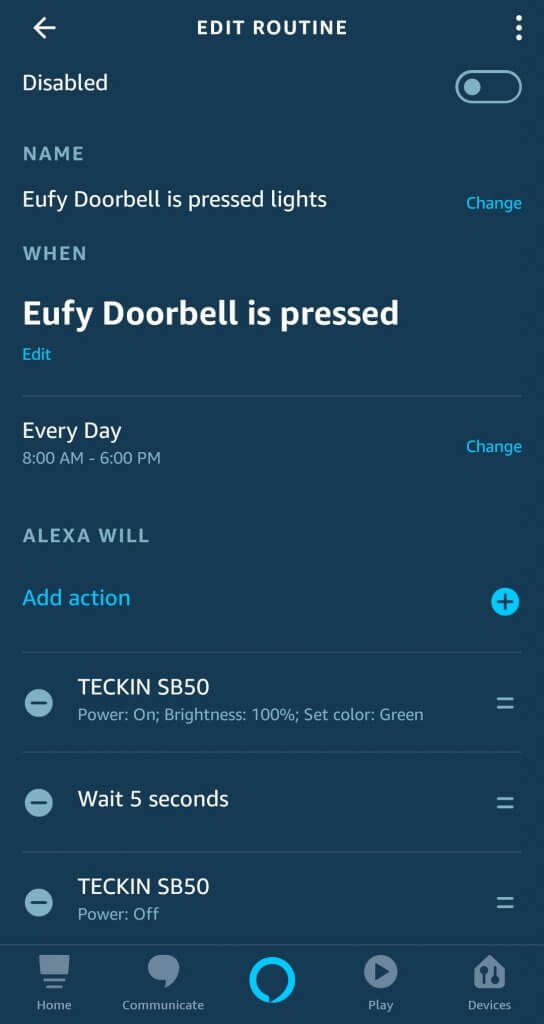
There’s also no way to know if the smart light was on or off before the doorbell was pressed.
The best solution I could come up with is just to have the smart lights flash a bright color once. Then turn off the bulbs.
I mainly need this automation to work during the day when packages are delivered, so having the bulb turn off after is fine. I set the automation to only run during the day, so it doesn’t turn off the lights at night.
More Expensive Option – LIFX/Hue
Using LIFX or Hue smart bulbs fixes both problems. First, they have APIs that can flash the lights on and off. Also, after the lights are done flashing they will go back to the state before flashing.
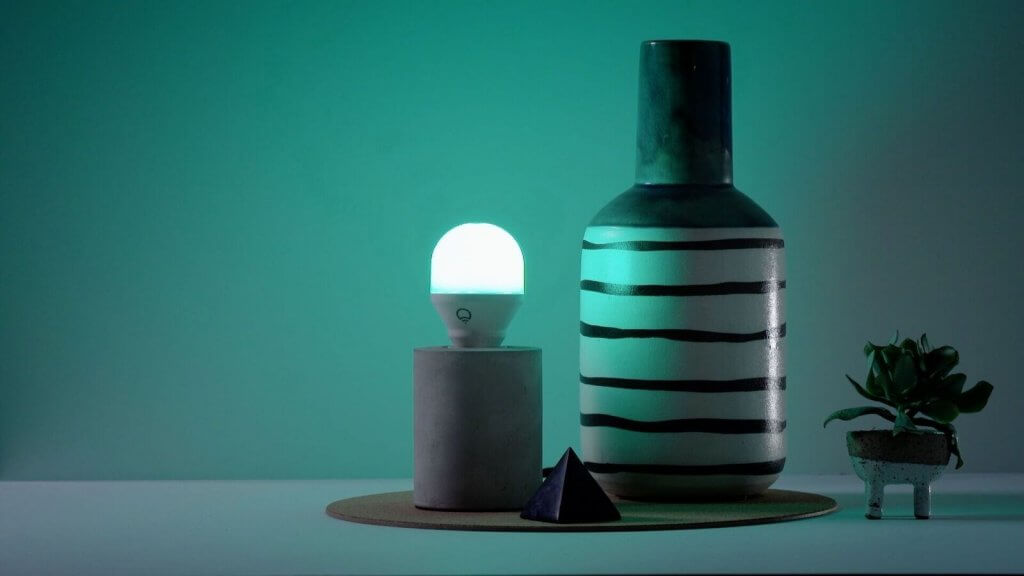
So it doesn’t matter what time of day this happens. If your lights were off and the doorbell was pressed, the lights will flash and then go back to off. If they were on, then they stay on. Much, much better.
There are two ways I prefer to implement this: IFTTT or webCoRE.
IFTTT for flashing lights
If you want to go the IFTTT route I recommend using an Alexa Routine to trigger the IFTTT applet. That way it’s easier to only run it during certain times and you could have your Echo devices announce someone is at the door as well.
All you have to do is create an IFTTT applet with the trigger being an Alexa phrase. Then the action of the applet is the “breathe” for LIFX or “blink” for Hue.
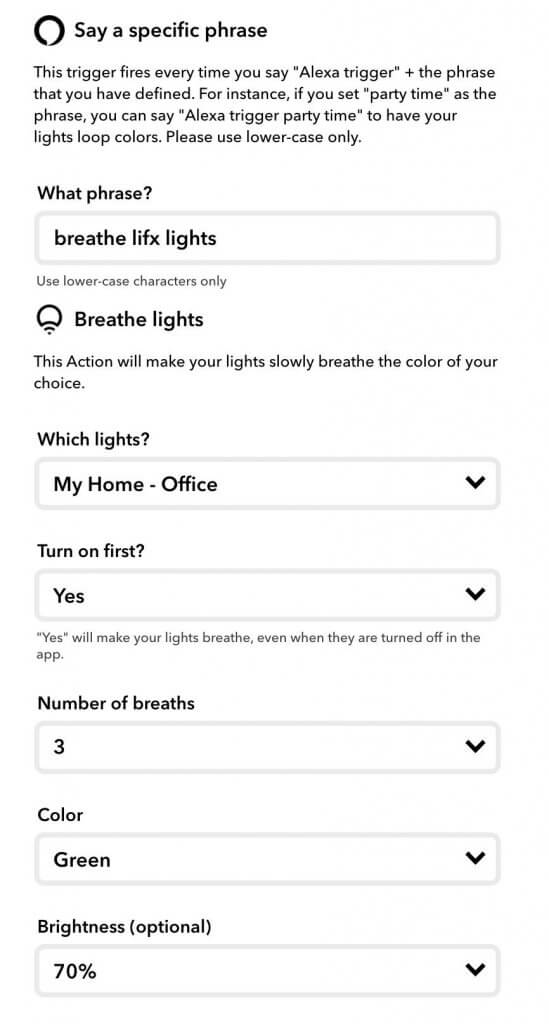
Once you add that the IFTTT applet will be available in the Alexa Routine as an action. Set the trigger of the Alexa Routine to be the doorbell press and you are good to go!
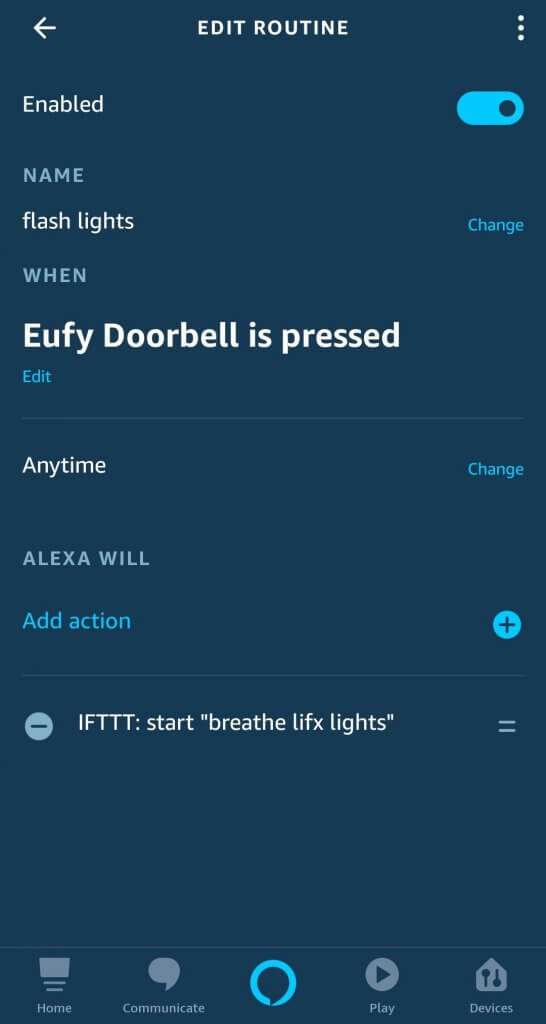
WebCoRE
In webCoRE there is a “flash” light function. I tried setting the time in between flashes to less than a second and it never works well. Setting it to a second isn’t bad.
You can also call the LIFX breathe function from webCoRE. It gives a lot of option for color and if the lights should turn on if they were off. I prefer the way LIFX’s breathe function looks over the flashing light option. It’s a smoother transition, a little more reliable, and just looks better.
Below is an example piston of showing both the flash function and the LIFX breathe as well.
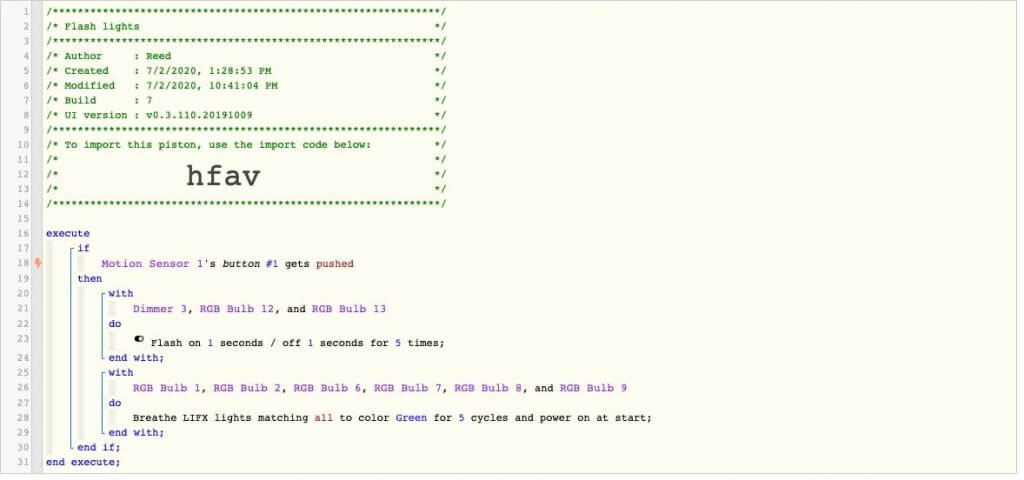
Summary
There isn’t anything wrong with going the budget route. It’s great for starting out and getting automations without spending too much. I use plenty of budget smart home devices, but they can be limiting.
If you like to keep it simple then you may be completely fine with the budget options. Hopefully this video and article helped you see what might be right for you.
I’m going to be doing more of these automation challenges, so don’t forget to send me an automation idea that you might need help with.
Also, please subscribe to my channel on YouTube so you don’t miss future content like this. 🙂
Hi There, I need help in getting my Nestcam Indoor & Smartthings Cam To show on Tinycam Pro. I can only get my Wyze Cam PTZ to work, I’d appreciate your help. Thanks in advance.